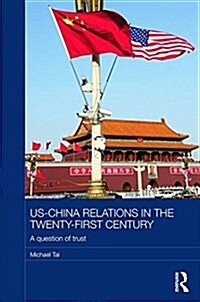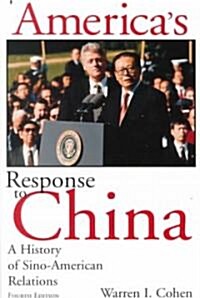
US-China relations in the twenty-first century: a question of trust
- 개인저자
- Tai, Michael
- 발행사항
- Abingdon, Oxon; New York, NY: Routledge, 2015
- 형태사항
- xviii, 205 p. ; 25 cm
- ISBN
- 9781138079793
- 청구기호
- 349.42012 M621u
- 서지주기
- Includes bibliographical references and index
소장정보
| 위치 | 등록번호 | 청구기호 / 출력 | 상태 | 반납예정일 |
|---|---|---|---|---|
이용 가능 (1) | ||||
| 1자료실 | 00017046 | 대출가능 | - | |
- 등록번호
- 00017046
- 상태/반납예정일
- 대출가능
- -
- 위치/청구기호(출력)
- 1자료실
책 소개
The relationship between the United States and China will be of critical importance to the world throughout the twenty-first century. In the West China’s rise is often portrayed as a threat and China seen in negative terms. This book explores the dynamics of this crucial relationship. It looks in particular at what causes an international relationship to be perceived negatively, and considers what can be done to reverse this, arguing that trust is a key factor. It goes on to discuss US and Chinese rhetoric and behaviour in three key areas ? climate change, finance, and international security. The book contends that, contrary to much US rhetoric, China’s actions in these areas is often much more flexible and accommodating than the US position, and that the Chinese are much more knowledgeable about, and understanding and appreciative of, the United States than vice versa.
The relationship between the United States and China will be of critical importance to the world throughout the twenty-first century. In the West China’s rise is often portrayed as a threat and China seen in negative terms. This book explores the dynamics of this crucial relationship. It looks in particular at what causes an international relationship to be perceived negatively, and considers what can be done to reverse this, arguing that trust is a key factor. The book contends that, contrary to much US rhetoric, China’s actions in these areas is often much more flexible and accommodating than the US position.
목차
Preface 1. Introduction 2. Generic Trust 3. Climate Change 4. Financial Crisis 5. International Security 6. Conclusion




